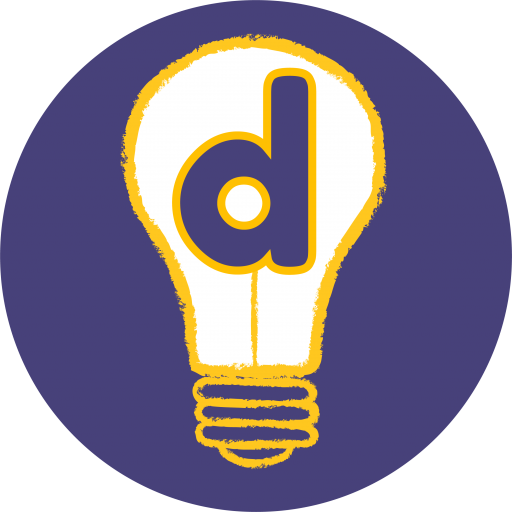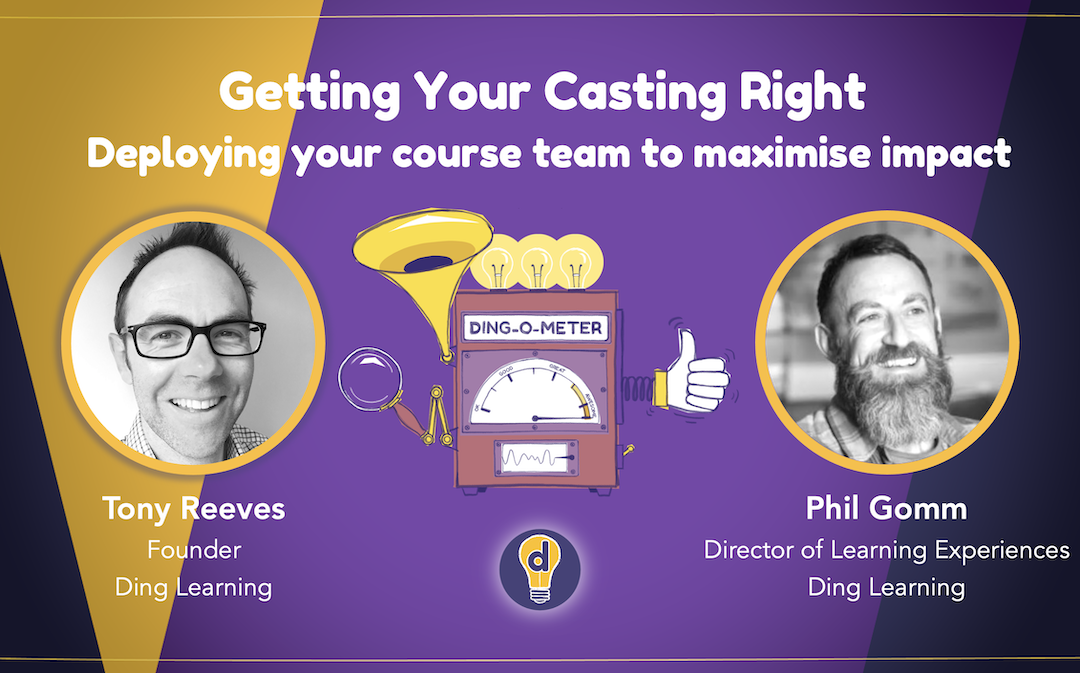Think about your favourite film or TV show for a moment. Now imagine if all the same words were spoken, but by completely different actors. Wild, right? That’s the power of casting – get it right, and the experience feels effortless. But cast the wrong people, and you can quickly who is in the wrong role.
This same principle plays out in a learning situation, where getting the right people in the right roles can make or break a learning experience.
The hidden art of casting
Professional casting directors earn six-figure salaries because their decisions can determine the success or failure of a film. While a learning programme may not be as glamorous as a film, the budgets can often be comparable – if you’re leading a course with 500 learners each paying £10K per year, you’re effectively directing a £5million production.
So it’s odd that in education we often overlook this “casting” element, and focus more on content over delivery. If you’re a Director of Learning, a Dean or Associate Dean, you should think carefully about who’s delivering the content, not just about what they’re delivering.
The parallel universe
Casting directors don’t just pick good actors – they pick the right actors for specific roles. An actor with a reputation for Hollywood disaster movies may not be such a good fit for a romantic comedy.
Similarly, brilliant researchers might not be the best choice to lead introductory courses. They may be an expert in their field and globally renowned, but they may also have forgotten what it’s like to ‘not know’ about their subject.
If this person is tasked with teaching first year undergraduates, they may end up blaming students for ‘not being clever enough’. Conversely, students may blame the researcher for not making the subject interesting, leading to a fall in student satisfaction.
So when we’re thinking about the route through a learning experience, we need to get the casting right by considering who is the best person to take charge of each stage of the journey.
Design strategies for imperfect casting
Unlike Hollywood, we can’t always hold open auditions for every educational role. So how do we work with what (and who) we’ve got?
This is where good learning design can help. While we may have limited choice about who delivers a session or a section of an experience, there are other ways to increase the chances that learners will have a good experience.
Let me help expand on these strategies through the lens of an experienced casting director. I’ll explain how each approach can help when you don’t have complete freedom in choosing who delivers your learning content.
1. The ensemble approach
- Break content into smaller, specialized segments
- Let each person play to their strengths
- Create multiple voices and perspectives within one course
Breaking content into smaller, specialised segments is like how we cast different actors for different scenes based on their specific strengths. In learning, this means dividing a course into shorter modules where instructors can focus on their areas of expertise. For instance, a statistics course might have one instructor handle theoretical foundations (where they excel) while another tackles practical applications (where they have industry experience). This reduces the pressure on any single instructor to be exceptional across all aspects.
Letting each person play to their strengths mirrors how we might cast a character actor for intense dramatic scenes while using a different performer for lighter moments. In education, this could mean having a theoretically-minded professor handle complex conceptual discussions while engaging a practitioner to lead case study analyses. This way, everyone operates in their comfort zone, leading to more authentic and confident delivery.
And creating multiple voices and perspectives is similar to how an ensemble cast brings different energies to a film. In learning, this means intentionally incorporating various teaching styles and viewpoints throughout a course. When learners hear from multiple voices, no single instructor’s limitations become overwhelming, and students benefit from a richer, more nuanced understanding of the subject.
2. The supporting cast
- Build robust supplementary materials
- Integrate peer learning and discussion
- Use guest speakers for key moments
Building robust supplementary materials is like having strong background sets and props that support actors even when they’re not at their best. In learning, this means creating comprehensive study guides, detailed notes, and reference materials that can help clarify concepts even if an instructor’s explanation isn’t perfect. These materials act as a safety net, ensuring core content is accessible regardless of delivery.
Integrating peer learning and discussion resembles how supporting actors can elevate a scene even when the lead isn’t as strong as we’d like. By designing opportunities for student interaction and group work, we create multiple channels for learning that don’t solely rely on the instructor. This distributed approach to learning helps compensate for any limitations in the primary instructor’s delivery.
Using guest speakers for key moments is like bringing in specialist performers for crucial scenes. By strategically incorporating expert guests for specific topics or critical concepts, we can ensure that particularly important or challenging material is delivered by someone with deep expertise, even if they’re not available for the entire course.
3. The Director’s cut
- Structure sessions to maximize engagement
- Create clear ‘stage directions’ in materials
- Provide detailed facilitation guides
Structuring sessions to maximise engagement is similar to how we pace scenes in a film to maintain audience interest. This means carefully planning the flow of each class session, alternating between different types of activities and ensuring key concepts are introduced when learners are most receptive. Good structure can help compensate for varying levels of instructor charisma.
Creating clear ‘stage directions’ in materials parallels how detailed scripts help actors deliver consistent performances. By providing instructors with specific guidance about timing, activities, and key discussion points, we can help less experienced teachers deliver content more effectively and confidently.
Providing detailed facilitation guides is like giving actors comprehensive character backgrounds and motivation notes. These guides help instructors understand not just what to teach, but why certain approaches are recommended and how to handle common questions or challenges. This support is particularly valuable for those who might be teaching outside their comfort zone.
4. The production design
- Build interactive elements that shine regardless of delivery
- Create self-directed learning pathways
- Use technology to enhance weaker areas
Building interactive elements that shine regardless of delivery is similar to how strong special effects can enhance any scene. Creating engaging activities, simulations, or exercises that are inherently interesting helps maintain student engagement even when an instructor’s delivery might not be optimal.
Creating self-directed learning pathways resembles how we might restructure a scene to rely less on a particular actor’s performance. By designing elements that allow students to explore and learn independently, we reduce the impact of any limitations in instructor delivery while promoting active learning.
Using technology to enhance weaker areas is like using post-production techniques to improve a scene. This might mean incorporating high-quality video content, interactive simulations, or adaptive learning tools to supplement areas where available instructors might not be as strong, ensuring learners still receive high-quality instruction in all aspects of the course.
The Director’s notes
Even the best actors need good direction. Effective learning design should provide clear guidance while allowing space for authentic delivery. The art of learning design, like film production, is about creating magic with the resources available. It’s about getting your casting right.
Sometimes that means writing to your actors’ strengths, sometimes it means creating systems that support their development, but it always means thinking carefully about who’s delivering what and how they can best serve the learner’s journey.
The best learning experiences, like the best films, aren’t just well-written – they’re well-cast, well-directed, and thoughtfully produced. Even with constraints, good design can help everyone shine.
Want to become a qualified learning designer?
We run a PGCert, PGDip and MA in Creative Teaching and Learning Design.






